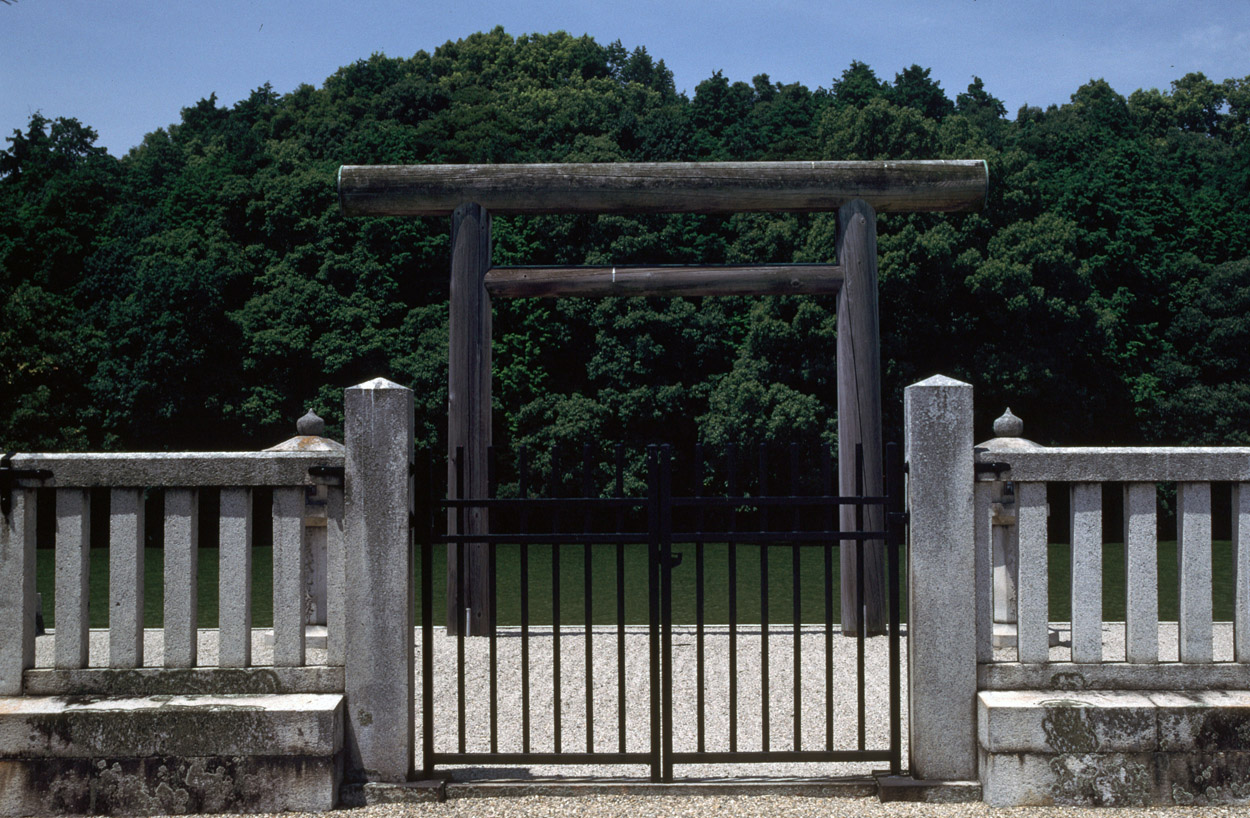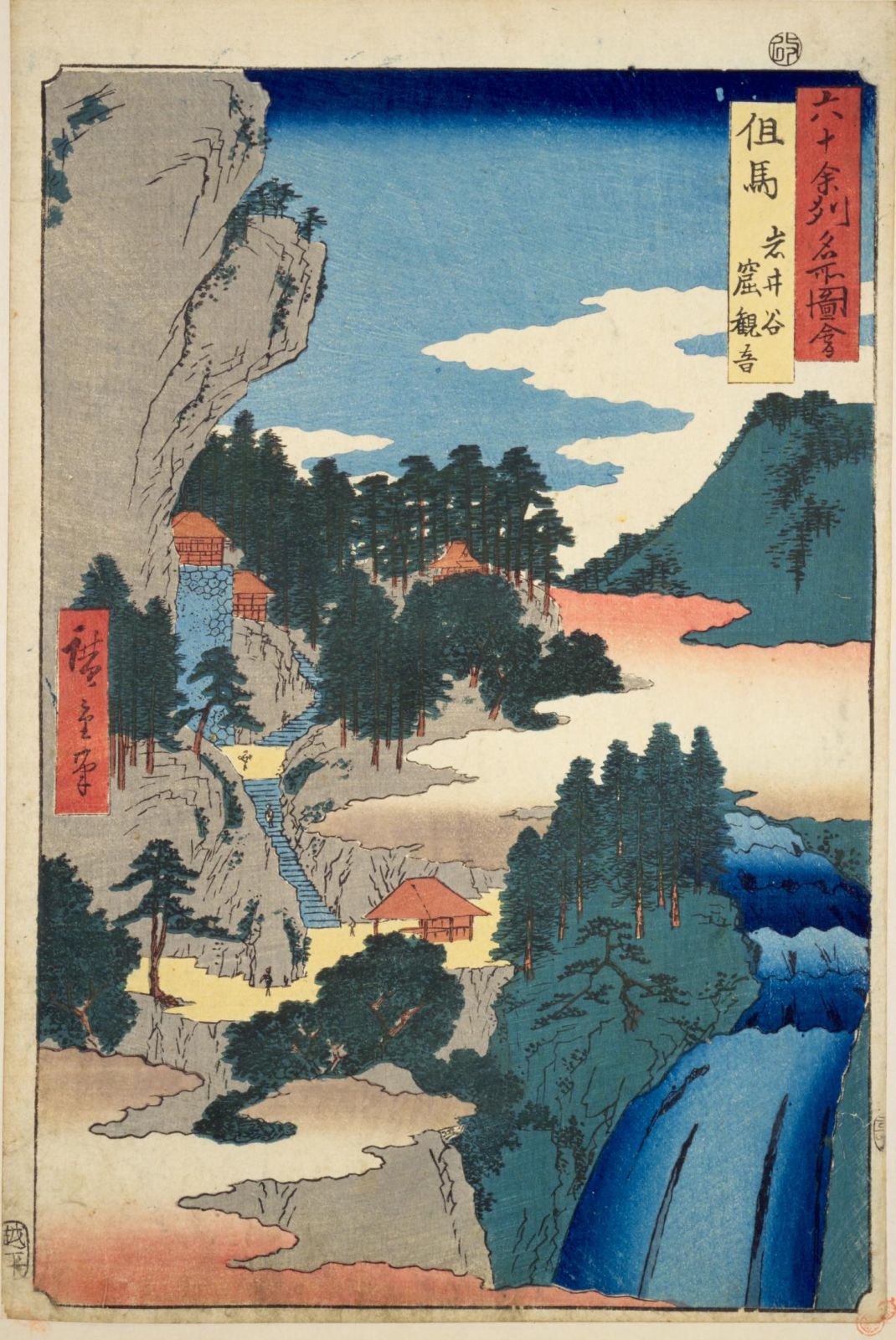|
Amenohiboko
was a legendary prince of Silla who settled in Japan during the era of Emperor Suinin, around the 3rd or 4th century and was said to have lived in Tajima Province. His descendants are the Tajima clan. Amenohiboko is the ancestral god of Tajima Province and is supposedly enshrined in the Shinto Shrine (''Izushi jinja'') at Toyooka in Hyōgo Prefecture. Seven or eight treasures brought by Amenohiboko are thought to be housed in Izushi Shrine in Hyōgo Prefecture. According to the ''Nihon Shoki'', "In Kagami Village, Omi Province is a hereditary noble title (''kabane'') of ancient Japan. It was given to the descendants of the Imperial Family before Emperor Kōgen. Along with ''Muraji'', ''Omi'' was reserved for the head of the most powerful clans during the Kofun perio ..., there was a craftsman of Suebe who served the prince of Silla, Amenohiboko, who came to Japan." However, at present, early Sueki was not found at Kagamiyama ruins of old kilns in Ryuocho, Shiga Prefecture, ... [...More Info...] [...Related Items...] OR: [Wikipedia] [Google] [Baidu] |
Izushi Jinja
is a Shinto shrine in the Izushi neighborhood of the city of Toyooka in Hyōgo Prefecture, Japan. It is the ''ichinomiya'' of former Tajima Province. The main festival of the shrine is held annually on October 20. Enshrined ''kami'' The ''kami'' enshrined at Izushi Jinja are: * * History The Izushi Shrine is located at the foot of a mountain on the eastern edge of the Izushi basin in the northern part of Hyōgo prefecture. It is located about 2 kilometers north of the current Izushi city area.The Ishrine is the center of the legend of Prince Amenohiboko of Silla, which is recorded in the " Kojiki" and " Nihon Shoki", who settled in this area during the reign of Emperor Suinin. He brought with him eight sacred treasures from Silla, including a sacred spear, and married a daughter of the ''kuni no miyatsuko'' of Tajima. The origins of Izushi Jinja are unknown. Although there is no documentary evidence, it is believed that it began as the family shrine of the descendants of t ... [...More Info...] [...Related Items...] OR: [Wikipedia] [Google] [Baidu] |
Izushi Shrine
is a Shinto shrine in the Izushi neighborhood of the city of Toyooka in Hyōgo Prefecture, Japan. It is the ''ichinomiya'' of former Tajima Province. The main festival of the shrine is held annually on October 20. Enshrined ''kami'' The ''kami'' enshrined at Izushi Jinja are: * * History The Izushi Shrine is located at the foot of a mountain on the eastern edge of the Izushi basin in the northern part of Hyōgo prefecture. It is located about 2 kilometers north of the current Izushi city area.The Ishrine is the center of the legend of Prince Amenohiboko of Silla, which is recorded in the " Kojiki" and " Nihon Shoki", who settled in this area during the reign of Emperor Suinin. He brought with him eight sacred treasures from Silla, including a sacred spear, and married a daughter of the ''kuni no miyatsuko'' of Tajima. The origins of Izushi Jinja are unknown. Although there is no documentary evidence, it is believed that it began as the family shrine of the descendants of t ... [...More Info...] [...Related Items...] OR: [Wikipedia] [Google] [Baidu] |
Silla
Silla or Shilla (57 BCE – 935 CE) ( , Old Korean: Syera, Old Japanese: Siraki2) was a Korean kingdom located on the southern and central parts of the Korean Peninsula. Silla, along with Baekje and Goguryeo, formed the Three Kingdoms of Korea. Founded by Hyeokgeose of Silla, of the Park family, the Korean dynasty was ruled by the Gyeongju Gim (Kim) (김, 金) clan for 586 years, the Miryang Bak (Park) (박, 朴) clan for 232 years and the Wolseong Seok (석, 昔) clan for 172 years. It began as a chiefdom in the Samhan confederacies, once allied with Sui China and then Tang China, until it eventually conquered the other two kingdoms, Baekje in 660 and Goguryeo in 668. Thereafter, Unified Silla occupied most of the Korean Peninsula, while the northern part re-emerged as Balhae, a successor-state of Goguryeo. After nearly 1,000 years of rule, Silla fragmented into the brief Later Three Kingdoms of Silla, Later Baekje, and Taebong, handing over power to Goryeo in 935. ... [...More Info...] [...Related Items...] OR: [Wikipedia] [Google] [Baidu] |
Japan
Japan ( ja, 日本, or , and formally , ''Nihonkoku'') is an island country in East Asia. It is situated in the northwest Pacific Ocean, and is bordered on the west by the Sea of Japan, while extending from the Sea of Okhotsk in the north toward the East China Sea, Philippine Sea, and Taiwan in the south. Japan is a part of the Ring of Fire, and spans Japanese archipelago, an archipelago of List of islands of Japan, 6852 islands covering ; the five main islands are Hokkaido, Honshu (the "mainland"), Shikoku, Kyushu, and Okinawa Island, Okinawa. Tokyo is the Capital of Japan, nation's capital and largest city, followed by Yokohama, Osaka, Nagoya, Sapporo, Fukuoka, Kobe, and Kyoto. Japan is the List of countries and dependencies by population, eleventh most populous country in the world, as well as one of the List of countries and dependencies by population density, most densely populated and Urbanization by country, urbanized. About three-fourths of Geography of Japan, the c ... [...More Info...] [...Related Items...] OR: [Wikipedia] [Google] [Baidu] |
Emperor Suinin
, also known as was the 11th legendary Emperor of Japan, according to the traditional order of succession. Less is known about ''Suinin'' than his father, and likewise he is also considered to be a "legendary emperor". Both the ''Kojiki'', and the ''Nihon Shoki'' (collectively known as the ''Kiki'') record events that took place during Suinin's alleged lifetime. This legendary narrative tells how he ordered his daughter Yamatohime-no-mikoto to establish a new permanent shrine for Amaterasu (the Sun Goddess), which eventually became known as the Ise Grand Shrine. Other events that were recorded concurrently with his reign include the origins of Sumo wrestling in the form of a wrestling match involving Nomi no Sukune. Suinin's reign is conventionally considered to have been from 29 BC to AD 70. During his alleged lifetime, he fathered seventeen children with two chief wives (empress) and six consorts. One of his sons became the next emperor upon his death in 70 AD, but the locati ... [...More Info...] [...Related Items...] OR: [Wikipedia] [Google] [Baidu] |
Tajima Province
was a province of Japan in the area of northern Hyōgo Prefecture. Tajima bordered on Tango and Tanba to the east, Harima to the south, and Inaba to the west. Its abbreviated form name was . In terms of the Gokishichidō system, Tajimao was one of the provinces of the San'indō circuit. Under the ''Engishiki'' classification system, Tajima was ranked as one of the "superior countries" (上国) in terms of importance, and one of the "near countries" (近国) in terms of distance from the capital. The provincial capital was located in what is now the city of Toyooka. The ''ichinomiya'' of the province is the Izushi Shrine also located in Toyooka. The area of the province was 2099.01 square kilometers. History Early history The early history of the Tajima region is uncertain. There appear to have been two power centers. The Tajima ''Kuni no miyatsuko'' ruled in eastern Tajima (present-day Asago District and Yabu District) and are mentioned in the ''Kujiki''. They tenuously ... [...More Info...] [...Related Items...] OR: [Wikipedia] [Google] [Baidu] |
Tajima Clan
Tajima is a Japanese name that may refer to: People *, Japanese population geneticist *, Japanese warrior monk *, Japanese baseball player *, Japanese print maker of the Sosaku Hanga School *, Japanese actress *, Japanese politician *, Japanese politician *, Japanese long jumper *, Japanese super centenarian *, Japanese athlete *, Japanese race car driver *, daughter of Emperor Tenmu of Japan * Renee Tajima-Peña (born 1958), American film director and producer *, Japanese photographer *, Japanese swimmer *, Japanese actor Characters *, a baseball player in the anime ''Big Windup!'' *Haruki Tajima/Yukine (雪音) Yato's Reagalia in the anime Noragami Other meanings of Tajima * Tajima, Fukushima, a town in Japan * Tajima Airport * Tajima cattle * Tajima Group, a manufacturer of sewing and embroidery machinery * Tajima Plateau Botanical Gardens * Tajima Province, Japan * Tajima's D Tajima's D is a population genetic test statistic created by and named after the Japanese research ... [...More Info...] [...Related Items...] OR: [Wikipedia] [Google] [Baidu] |
Shinto Shrine
A is a structure whose main purpose is to house ("enshrine") one or more ''kami'', the deities of the Shinto religion. Overview Structurally, a Shinto shrine typically comprises several buildings. The '' honden''Also called (本殿, meaning: "main hall") is where a shrine's patron ''kami'' is/are enshrined.Iwanami Japanese dictionary The ''honden'' may be absent in cases where a shrine stands on or near a sacred mountain, tree, or other object which can be worshipped directly or in cases where a shrine possesses either an altar-like structure, called a ''himorogi,'' or an object believed to be capable of attracting spirits, called a ''yorishiro,'' which can also serve as direct bonds to a ''kami''. There may be a and other structures as well. Although only one word ("shrine") is used in English, in Japanese, Shinto shrines may carry any one of many different, non-equivalent names like ''gongen'', ''-gū'', ''jinja'', ''jingū'', ''mori'', ''myōjin'', ''-sha'', ''taisha ... [...More Info...] [...Related Items...] OR: [Wikipedia] [Google] [Baidu] |
Toyooka, Hyōgo
is a Cities of Japan, city in the northern part of Hyōgo Prefecture, Japan. , the city had an estimated population of 78,348 in 37769 households and a population density of 110 persons per km².The total area of the city is . Geography Toyooka is located in the northern part of Hyōgo Prefecture and the Kinki region, facing the Sea of Japan in the north. It lies entirely within the San'in Kaigan Geopark. The Maruyama River flows through the central part of the city, and the Toyooka Basin, which is the largest basin in the Tajima region, spreads out in the central part of the city. Toyooka is located in the Snow country (Japan), "snow country" of Japan and is characterized by heavy accumulations of snow in winter. One of Toyooka's famous geological features is a basalt cave called Gembudō. Gembudō was formed 1.6 million years ago from the eruption of an ancient volcano. In 1926, Professor Motonori Matuyama of Kyoto University first proposed the theory of geomagnetic polarity ... [...More Info...] [...Related Items...] OR: [Wikipedia] [Google] [Baidu] |
Hyōgo Prefecture
is a prefecture of Japan located in the Kansai region of Honshu. Hyōgo Prefecture has a population of 5,469,762 () and has a geographic area of . Hyōgo Prefecture borders Kyoto Prefecture to the east, Osaka Prefecture to the southeast, and Okayama Prefecture and Tottori Prefecture to the west. Kōbe is the capital and largest city of Hyōgo Prefecture, and the seventh-largest city in Japan, with other major cities including Himeji, Nishinomiya, and Amagasaki. Hyōgo Prefecture's mainland stretches from the Sea of Japan to the Seto Inland Sea, where Awaji Island and a small archipelago of islands belonging to the prefecture are located. Hyōgo Prefecture is a major economic center, transportation hub, and tourist destination in western Japan, with 20% of the prefecture's land area designated as Natural Parks. Hyōgo Prefecture forms part of the Keihanshin metropolitan area, the second-most-populated urban region in Japan after the Greater Tokyo area and one of the w ... [...More Info...] [...Related Items...] OR: [Wikipedia] [Google] [Baidu] |





